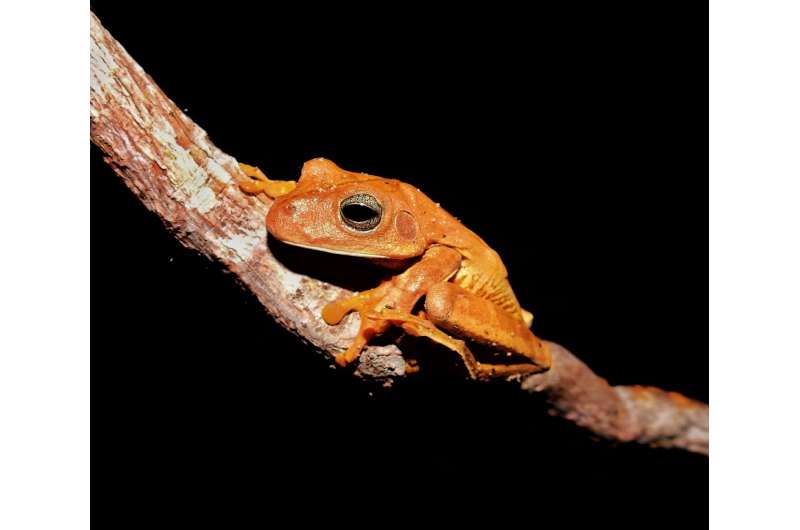Global climate change, economic interests negatively impact amphibian diversity in Brazilian rainforest: Study

Senckenberg researchers, together with a Brazilian-German team, have investigated the effects of climate change on the taxonomic and functional diversity of amphibians in the Mata Atlântica. The rainforest in the eastern part of South America is one of the most threatened tropical forest areas and is home to more than 50% of the amphibian species found in Brazil.
In their study, published in the journal , the scientists show that even a moderate climate change trend will have an enormous impact on the future diversity of amphibians—and that economic interests are putting frogs and their ilk under additional pressure.
The effects of climate change are being felt on a global scale: Forest fires, dried-up water bodies, or extreme weather events are the order of the day. "In our recent study, we investigated how climate change will affect the amphibians of the Mata Atlântica, one of the most threatened tropical forest areas in the world," explains PD Dr. Raffael Ernst of the Senckenberg Natural History Collections Dresden.
"Amphibians are highly dependent on specific microclimatic parameters and occupy very different ecological niches. Thus, they are ideal model organisms to study the effects of anthropogenic climate change on biodiversity."
The Atlantic rainforest of Brazil is facing heavy pressure, which has led to unprecedented deforestation and degradation in recent decades. Originally, the Mata Atlântica covered an area of about 150 million hectares, extending from southern to northeastern Brazil. In addition to dense forests, the area also contains open areas such as clearings, fields, swamps, and ponds.
"Currently, only 12% to 16% of the original ecosystem remains, and what is left is heavily fragmented. Yet, this habitat hosts nearly 20% of all known South American amphibian species and more than 50% of those found in Brazil," explains Dr. Paula Ribeiro Anunciação, lead author of the study from the Federal University of Lavras.
Ribeiro Anunciação joined Ernst and other researchers in a two-year research fellowship to look at the future of amphibians, birds, and dung beetles—ecologically important indicator groups—in the study area. For amphibians, the team examined two scenarios concerning their development through the years 2050 and 2070, respectively: the scenario RCP 4.5 of the Intergovernmental Panel on Climate Change (IPCC) projects moderate climate change, while RCP 8.5 is based on largely uncontrolled warming.
"For both scenarios and time periods, we predict a significant decline in taxonomic and functional amphibian diversity in the future—that is, we will not only lose individual species irretrievably, but the entire ecosystem will change," says Ernst. According to the modeling results, this will affect species that thrive in closed forests as well as animals that prefer open habitats.
Only in the eastern coastal region and in high-altitude habitats is it likely that the original diversity of frogs and other animals will be largely preserved despite climate change. "However, it is precisely these areas—due to their proximity to Brazil's most developed urban and industrial locations—that are at the center of current real estate speculation," warns the herpetologist from Dresden.
"Therefore, it is not enough to identify such biodiversity refuges and then hope that they will contribute to the long-term preservation of biological diversity in times of global climate change. Rather, it is important to sustainably and effectively combat the underlying cause—i.e., climate change. This is the only way we can also preserve the unique ecosystem and the amphibian diversity of the Mata Atlântica."
More information: Paula Ribeiro Anunciação et al, Climate-driven loss of taxonomic and functional richness in Brazilian Atlantic Forest anurans, Perspectives in Ecology and Conservation (2023).



















